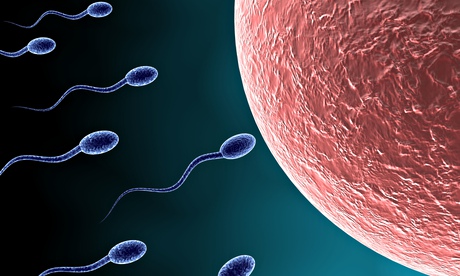
You're not that different from a mouse. Or a fruit fly. Or even a lancelet. These were the great discoveries of biology in the 20th century, which saw the alignment of some of the ultimate ideas in the history of ideas. Evolution by natural selection was resolved with the nature of inheritance via genetics. And then came the revelation that DNA is universal in living things – we share the same code and, in many cases, the same genes with distant evolutionary cousins. Science is always subject to change and to continuous self-revision. But I'm willing to stick my neck out and assert that these ideas are here to stay and will never be fundamentally overturned.
Most elegantly they combined in the 1990s, when the emerging field of developmental genetics – how DNA shapes our bodies – teamed up with evolutionary biology to form the gestalt field known as "evo-devo". We saw that the same genes did very similar things in wildly different species. We did freakish experiments that revealed deeply rooted common ancestry. We saw that the body plans of the most starkly different shaped animals were in fact very similar if you looked hard enough. My personal favourite is the embryological gene I worked on called Pax6, whose role is to decree where an eye is going to be, in all species that have eyes. Astonishingly – and brilliantly – researchers took Pax6 from a mouse, and stuck it in a fruit fly whose own Pax6 was broken. Lo and behold, the fly's error was corrected and it grew eyes. Fly eyes, not mouse eyes.
We had begun to understand the evolutionary building of creatures. Alice Roberts's wonderful new book could easily be called How to Build a Human, as it takes these grand unifying ideas of biology and synthesises them into a manual of development from conception to birth. Each one of us starts our tenure on Earth as a single cell, and ends up as 100 trillion (or so), all specialised for function. Roberts skilfully and knowledgeably weaves embryology with genetics with anatomy with evolution with zoology with history to build up a picture of the growth of a baby. Along the way, she asks – and provides the current best theories for – questions that you might never have considered: why do we have heads? How has two-leggedness radically altered our bodies?
It is in comparative anatomy that this book really shines; that we can use the structure of a shark's gills to know our own voice boxes; the subtle but defining differences in the musculature of simian hands; the importance of the fate of cells in the developing hagfish and human. Roberts's anatomical expertise is seductive. Revel in the splendidly chewy language of anatomy, with technical names that sound like tracks from a prog-rock album: get your arytenoid cartilages stuck into terms like splanchnocranium and Wolffian ducts, the Trendelenburg gait and the first volar interosseous of Henle.
Roberts is many things: academically she's a clinical anatomist and professor of public understanding of science at the University of Birmingham. She writes a weekly column in these pages, and campaigns for better science education. Her stamina and appetite for clashing with the tiresome, relentless zombie arguments of creationists is far greater than mine. But her primary public presence is on television, where she and other presenters are required to be august, and serious, packed with wistful looks, awe being the fashion of the day. This is in some ways a shame, because interpolated in great scholarship, this book is very witty, and littered with asides that are personal and jolly, and often a little bit cheeky. Describing the lamprey's terrifying vagina dentata-like mouth as resembling the sarlacc from Return of the Jedi is adorably evocative. And yes, "sperm worm" would be a vastly superior moniker for the no doubt functionally named Enteropneusta, because it's a worm that resembles a colossal sperm, and crucially, as Roberts points out, it rhymes.
I like to think there's a delicate level of puerility in the life sciences, absent in many other serious endeavours. The law rarely provokes a chuckle, economics, never. But evolutionary biology can be reduced to the "Four Fs: feeding, fleeing, fighting and reproduction", as one of my old tutors used to quip. Evo-devo starts with the fourth F, which means that when the business of sex is finished, life begins. This is a scientifically robust book, packed with up-to-date and historical research, and in no way trivial. But it is a long distance from ponderous, and Roberts's lightness of touch is joyous, and celebratory. The chapter on the fascinating development of our sexual and reproductive organs contains sections entitled "Mind the Bollocks", "Penises, Clitorises and Orgasms", and "A Tight Squeeze". Stop smirking at the back, embryology is a serious business.
Adam Rutherford is the author of Creation: The Origin of Life/ The Future of Life (Viking).

